Matador Network's Blog, page 771
October 6, 2020
Costa Rica reopening
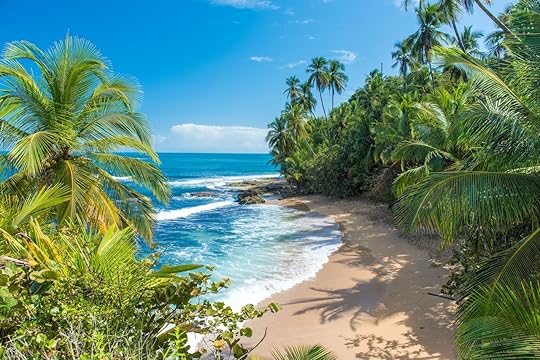
Costa Rica has just announced that starting November 1, residents of all US states will be allowed to visit the country. Since September 1, Costa Rica has taken a slower approach to reopening, doing so on a state-by-state basis.
Tourism Minister Gustavo Segura said, “This will allow us to reactivate tourism so that companies can work, at least, above the equilibrium point during the high season, which runs from November 2020 to May 2021.”
Despite opening its borders, Costa Rica will limit passenger volume on incoming flights to 35-40 percent compared to previous years.
Currently, residents of California, Ohio, Connecticut, Maine, Maryland, New Hampshire, New Jersey, New York, Vermont, Virginia, Washington, DC, Arizona, Colorado, Massachusetts, Michigan, New Mexico, Oregon, Pennsylvania, Rhode Island, Washington, and Wyoming are allowed to travel to Costa Rica. As of October 15, residents of Florida, Georgia, and Texas will be allowed in, and the doors will open to all US residents on November 1. Proof of residence such as a driver’s license or state identification will be required.
Incoming tourists will be required to fill out an online health questionnaire, show proof of a negative COVID-19 PCR test taken within 72 hours of arrival in Costa Rica, and have traveler’s medical insurance.
Travelers from Europe’s Schengen Zone, the UK, Canada, Mexico, Uruguay, Jamaica, Japan, South Korea, Thailand, Singapore, China, Australia, and New Zealand are also allowed to enter under the same requirements.
For more information about traveling to Costa Rica and entry requirements, visit the official website of the Costa Rica tourism bureau. 
A version of this article was previously published on August 21, 2020, and was updated on October 6, 2020, with more information.
More like thisParks + WildernessThe 7 most amazing waterfalls in Costa Rica
The post Costa Rica is reopening to all US tourists on November 1 appeared first on Matador Network.

October 5, 2020
What to know before a powwow
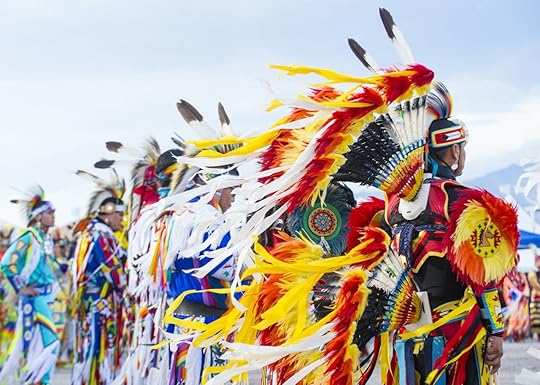
Every October, I gather with my family under a bead blue sky. Powwow weekend. All around me American Indian fathers are holding sleeping babies. Mothers are trading stories, their shiny cut beads reflecting light, while braiding their children’s hair with feathers in the colors of the earth. I listen to the wind spilling through the tree leaves. Time merges with timelessness. Memories circle and carry me back across three decades of our Native community gatherings with song, dance, and prayer.
Last year my close friends asked if they could come to the powwow with me. Before we traveled to the powwow I sat down and told them the stories I am sharing with you now. By no means do I believe that I am an expert regarding powwows, or have expert knowledge of Native American people. Learning is a lifelong pursuit, but what I do know comes from growing up Native American.
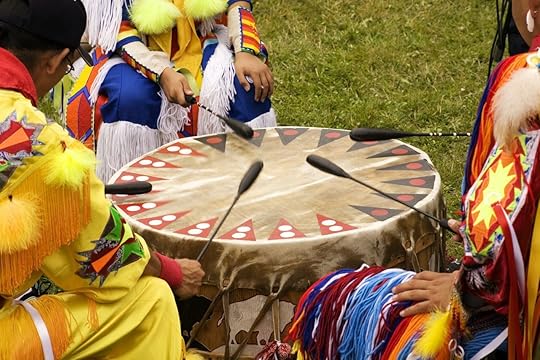
Photo: Bill Perry/Shutterstock
Throughout the day I ask my friends to close their eyes, and listen to the drums, and imagine what it might have been like hundreds of years ago. Multiple times throughout the day I also take them to meet my friends in the Native community. I want them to see happy Native Americans laughing and joking with each other. Humor is an important American Indian cultural trait. We believe it is of key importance not only to laugh but to also be able to laugh at ourselves. I want them to see American Indian children eating popcorn, being silly and playing the same games all children play. And then have the opportunity to see those same children change into their dance regalia, have their hair braided, faces painted, and prepare to dance.
I want to provide stepping-stones for my friends so they can begin to see that American Indian people have respect for our traditional ways and that we are also real people too, who drive cars, and work as doctors and teachers. To show them that American Indian mothers and fathers are also regular moms and dads who cook dinner, help their children with their homework, play baseball, and go out for pizza, and that we are not relics from the past.
Most of all I want my friends to understand that Native Americans are Native Americans with deep cultural roots and lifeways, even when we are not dressed in beadwork and feathers.
We are here at the powwow to honor the past and be proud of our future. I share with my friends the stories my grandmothers told me about how each person is a link to history, and that when it comes to powwows some Native people chose to become drummers, others become dancers, but even those of us who are watching and listening, that every American Indian person at the powwow is connected, and is making a statement that American Indian people are still here. This is our celebration of life past, present and future.
Visitors are always welcome, but powwows are an Indian event and are usually not directed toward non-Indians. If learning more about Indigenous culture interests you and you are considering attending a powwow yourself, here are a few basic things you should know.
1. Powwow is a modern-day word
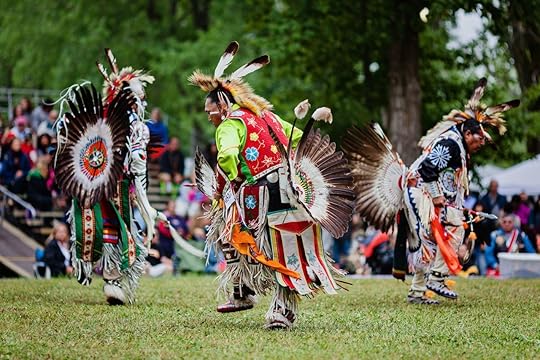
Photo: Alina Reynbakh/Shutterstock
All of the Elders I know tell me that before the First World War they were called gatherings. After the corn was dried, pumpkins sliced, and the wild plums brought in it was a time for giving thanks. When the food was together for the hard winter months, and when the work was all done, they came together. After the First World War these “gatherings” were held to honor the servicemen who came back.
Today a powwow is a reunion for many Native families, clans, and tribes spread apart in different cities or reservations. There is the exchange of news, ideas, song, dance, and Native fashion, style, and art. It’s a time when Native people reflect on traditions.
2. A powwow runs on “Indian time”
This means that it will begin when all the drums and dancers are ready. When everyone is ready, first there is a Ground Blessing. Then the flag bearer’s lead in with the American flag, the state flag, and an Eagle Staff. Next is the Grand Entry — the dancers represent many different tribes. After all the dancers are in the arena a Flag Song is sung, a prayer is offered, and it’s followed by a Victory Song.
3. The importance of the drum
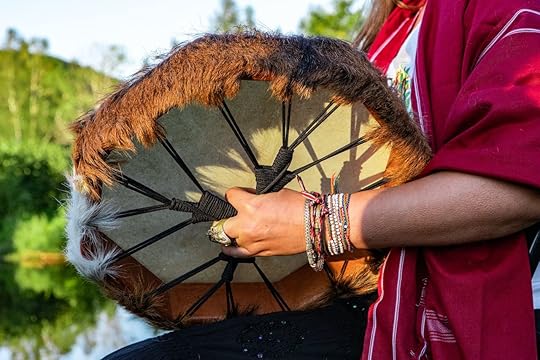
Photo: Valmedia/Shutterstock
The drum is one of the oldest memories an American Indian has — it has always been with us and is the single most important element of a powwow. During the Grand Entry, we stand and form a circle around the dance area, feeling the heartbeat of the drum, with hundreds of Indian people wearing soft moccasins, dancing: men, women carrying babies, boys and girls, and the elders who barely move staying close to the earth and listening to the beat.
4. The dance arena or arbor is sacred and is respected, like the inside of a church
Many Native families travel hundreds of miles to attend powwows across the continent. Time and distance are not relevant — it is the renewal of tradition that is of paramount importance. It brings a long heritage back into the framework of real life.
While growing up I was taught each person has her or his own personal observance for dancing, drumming, singing, and being present at a powwow. Native people gathered around the arena are not observing; we are participating as we form a circle around the drums, singers, and dancers.
5. You must ask before you photograph
It is polite to ask permission from the dancers before you take a picture if they are away from the arena. It is necessary to ask because some do not want to be photographed due to our longstanding traditional beliefs. 
More like thisCulture10 places in the US where you can experience Native American culture responsibly
The post Everything you need to know before attending a powwow appeared first on Matador Network.

Indigenous food and culture
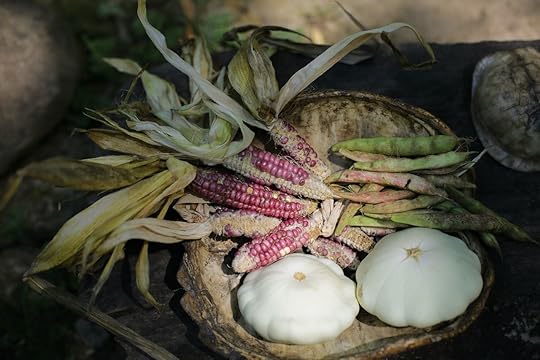
When Renee Gokey was growing up, her Shawnee grandmother cooked large, steaming pots of beans, often with potatoes or fry bread, that were hearty and simple. As Gokey got older, she saw the beans as more than just part of a dish; they were part of her history. Beans, for example, gave her grandmother strength during the Great Depression and through years of manual work at the Seneca Indian Boarding School in rural Oklahoma.
“Food is at the heart of my family life and culture,” says Gokey, a student and teacher services coordinator at the Smithsonian’s National Museum of the American Indian. “In my own Shawnee culture, we have many oral traditions about how our most sacred foods came to us, what our relationship to them is, and our value systems that surround our foods such as respect, interdependency, restraint, a focus on harmony, and reciprocity.”
In much of North America before Europeans arrived, many Indigenous peoples relied on the crops known as the Three Sisters: corn, beans, and squash. The ingredients were sustenance but also an important part of the stories central to the culture. The Three Sisters are gifts from the Creator in Iroquois legend. A Haudenosaunee story of the Three Sisters personifies the plants as teachers of interconnectedness, harvest seasons, and how the dried crops can help people survive long winters.
These stories were just as much about teaching a way of life as they were about teaching survival. Traditional gardens put the Three Sisters together in plots — a practice that’s today called intercropping or companion planting. Sturdy cornstalks support the beans as they grow, and the large leaves of squash plants help keep the soil moist. Corn needs lots of nitrogen in the soil to reach full potential, and bean roots provide that nitrogen.

Photo: Cynthia Liang/Shutterstock
By learning these stories, an ear of corn becomes a lesson in food, culture, history, and science all in one. It’s a way to tell how lives were and continue to be lived. Each crop has its own tale depending on who is talking about it.
“We have a Shawnee pumpkin that some families still grow,” Gokey says. “We still have a pumpkin dance, and this food was cut into rings and smoked over the fire for the winter.” On one of her ribbon skirts, the Three Sisters are sewn onto the front with the small, greyish-blue Shawnee pumpkin.
“If people study food, they will learn about the incredible diversity among Nations,” Gokey says, “and that Native people developed sophisticated food systems specific to their microclimates. Native families have a great depth of knowledge of the environment and seasons, innovative agriculture, water management, seed cultivation, and even astronomy to understand the cycles of the earth, sun, and moon for when and how to plant, harvest, and preserve hundreds of Native foods.”
Food can nourish the mind and spirit as much as the body. In Shawnee culture, certain dishes are only cooked at a specific time of day or night, Gokey says. She adds that many Native peoples are taught to not argue or be angry when working with food, and that people should be in a good state of mind and good spirit when harvesting, cooking, and eating.
In addition to understanding culture, learning about traditional Indigenous foodways can also help people understand the devastating impact of colonialism, forced relocation, America’s westward expansion, and industrialization.
The United States government used access to food as a tool for control. It took land away from Indigenous peoples and provided highly processed, often canned, commodity food. In the Pacific Northwest, local governments broke centuries-old treaties with Indigenous tribes, sometimes called the Salmon People, to keep them from historic fishing grounds. The impact of these acts and others like it have repercussions to this day, as seen by the high rates of obesity and diabetes from commodity food and limited access to healthcare.
“By looking at the deeper layers of food and culture, people can learn a lot about this country’s origins, history, and how food connects to inequity today,” Gokey says. “If your identity is salmon, what happens when the salmon waters become polluted, and therefore the fish and your family have disease? [Or] when dams stop both the salmon and you from thriving? Today, tribes across this land are fighting back for control of their food systems, often on very limited pieces of land. For my family and many others, these struggles are not only for food sovereignty but for health and cultural identity.”
The relationship between traditional foods and post-colonial staples like fry bread is complex, however, but studying the interplay between a cuisine and its adherents might bring you one step closer to understanding their history.
“You can learn about the forced removal of about 33 separate tribes, including my own, through learning of the ways our people adopted new foods to blend in and try to avoid removal (it didn’t work), or, kept our food seeds, sometimes sewing them into clothing and dresses, as our tribes were forced on foot or by steamboat to new lands. One can look at the story of westward expansion and the related slaughter of buffalo by the US government in the 1800s to see the devastating effects on Northern and Southern Plains cultures through dismantling not only traditional hunting and food systems but working to destroy their homes, lives, and relationships.”
Gokey suggests a two-pronged approach to learning through food. The first is to take the time to understand ingredients and where they come from. The second is to take supportive action. Support food sovereignty led by Indigenous peoples and allies who preserve a diversity of crops through seed saving. Purchase from local farms. Grow crops where you can — this summer Gokey grew Cherokee popcorn with a lineage that dates back to at least the 1700s — and consider rematriating (Indigenous women served as seedkeepers in many tribal communities) Native seeds to Native people, Gokey says.
“By growing a food yourself, exploring changes in a family recipe, looking at cultural innovation and creativity, and even how hardships in life can change a dish, we grow an appreciation and more respect for our food and our ancestors,” Gokey says. “That respect flows both ways and around us. Native cultures, in general, have relational ways of knowing, rather than reductionist. I think being able to make connections between history, food, and diversity of cultures shows how interrelated we all are and that it’s hard to separate them.” 
More like thisFood + DrinkHow Indigenous seed savers safeguard agricultural and spiritual tradition
The post How food can teach us about Indigenous traditions and culture appeared first on Matador Network.

Most haunted states in the US

Living in a haunted house or a haunted town isn’t an enviable situation, except on Halloween. When October 31 rolls around, it suddenly becomes a point of pride to live in an area with legends of grisly murders, ghosts of long-lost sailors, a mysterious forest, and street lamps that flicker ominously.
If you haven’t had a run-in with the supernatural yourself, chances are you know someone who has. There are thousands of ghostly encounters reported each year all across the US, and we usually tend to shrug it off until Halloween comes — then we seek it out.
To really immerse yourself in spooky season this year, consider this list of the US’s most haunted states. SlotSource.com monitored paranormal activity in all 50 states to identify the country’s most haunted destinations. Texas took the top spot with 6,845 spiritual sightings. If you’re a resident of California, don’t despair — there have been 6,444 ghost sightings in the Golden State. Ohio and Michigan came in third and fourth, though their numbers are far lower at 2,555 and 2,426 respectively.

Photo: Slotsource.com
If you’re more concerned with avoiding paranormal activity than seeking it out, head to Puerto Rico, which ranked dead last. As for the mainland, however, the last-place spot belongs to Delaware. 
More like thisWhere to Stay9 haunted hotels you can actually spend the night in
The post The most haunted states in the US, ranked appeared first on Matador Network.

World’s most powerful passports

The COVID-19 pandemic has mixed things up in the annual ranking of the world’s most powerful passports. We’re used to Japan and Singapore taking the top spot, but this year is a whole different story. Thanks to each country’s vastly different handling of the pandemic, passport strengths around the world have fluctuated wildly. This is evidenced by the unveiling of this year’s Passport Index. The index uses a multi-tier method to figure out the strength of each passport, including visa requirements, electronic travel authorization, world openness score, and mobility score.
Given New Zealand’s expert handling of the pandemic, it’s no surprise that they’re ranked number one. New Zealanders have visa-free access to 128 countries, with Germany, Austria, and Luwemburg following closely behind with nearly identical scores.
As might be expected, the US has fallen in the rankings. While it ranked third last year, the US is currently tied with Malaysia at the 21st spot. In 2019 the US had a mobility score of 171, though thanks to its poor handling of the pandemic, and continued high rate of transmission, that number has dropped dramatically. Now it has visa-free access to only 52 countries and a mobility score of 92 compared to New Zealand’s 129. (The Mobility Score is defined as “the total number of countries that can be easily accessed with a given passport” by Passport Index.)
The rankings are likely to change as travel restrictions evolve during the course of the pandemic. 
More like thisTravelThe days of US passport dominance may be over
The post The 2020 world’s passport power ranking is out, and the US has fallen dramatically appeared first on Matador Network.

Attenborough asks world leaders

If world leaders don’t already care about the facts behind global warming, habitat destruction, and animal extinction, Sir David Attenborough is going to make them. The famous British naturalist spoke at a virtual United Nations event, calling on world leaders to devote more time and resources to reversing losses in the natural world.
Because of hunting, habitat destruction, and other human activities, one million species are now threatened with extinction.
“If we ever needed a strong signal from world leaders, for people like you, that we are going to solve this, then this is now,” he said.
British Prime Minister Boris Johnson pledged to protect an extra 988,400 acres of countryside in the UK to encourage the recovery of nature, and promised that the government would increase the amount of protected land in the UK by four percent by the end of the decade — from 26 percent to 30 percent.
According to the BBC, following Attenborough’s call, “65 heads of state and government signed a global pledge to reverse losses in the natural world by 2030.” 
More like thisFamily TravelSir David Attenborough implores world leaders to do more to protect nature
The post Sir David Attenborough implores world leaders to do more to protect nature appeared first on Matador Network.

The Bahamas is lifting quarantine
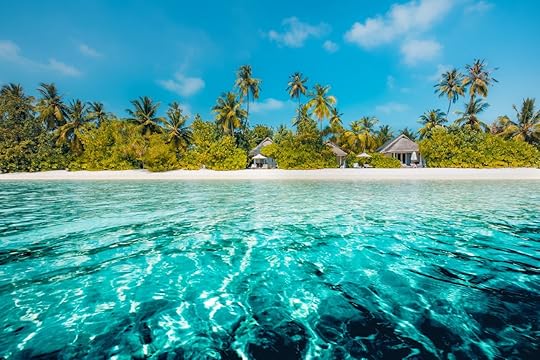
The Bahamas will soon reopen to international travelers without a quarantine requirement. As announced on October 2, starting on November 1, visitors will be able to enter the island and move around freely if they can show a negative COVID-19 PCR test result taken no more than seven days before traveling. They’ll also be required to take a rapid antigen test upon arrival, as well as four days afterward, which must also be negative. In addition to the tests, you need to apply for a Bahamas Health Travel Visa, which includes the cost of the two antigen tests.
Dionisio D’Aguilar told Travel & Leisure, “We are making changes to our travel and testing protocols in order to give our visitors a better and more seamless vacation experience. We want everyone to enjoy the Bahamas thoroughly and with peace of mind. These new steps will allow us to closely monitor and respond to any potential spread of the virus, while our visitors can continue to have the authentic Bahamian experience they know and love. With 16 islands to choose from, many that offer natural seclusion, we have something for everyone and look forward to welcoming travelers back to our shores.”
If you’re itching for a Bahamas vacation and planning to visit before November, you can still do it. Starting October 15, visitors can choose to “vacation in place” for 14 days (or less if your trip is under two weeks). You’ll still need the negative PCR test prior to arrival, and must stay in your hotel, but you’re free to take advantage of all the resort’s amenities and facilities. 
More like thisFood + Drink8 traditional Bahamian dishes to get a taste of the islands
The post The Bahamas is lifting its mandatory quarantine for international travelers appeared first on Matador Network.

2,600-year-old sarcophagi discovered
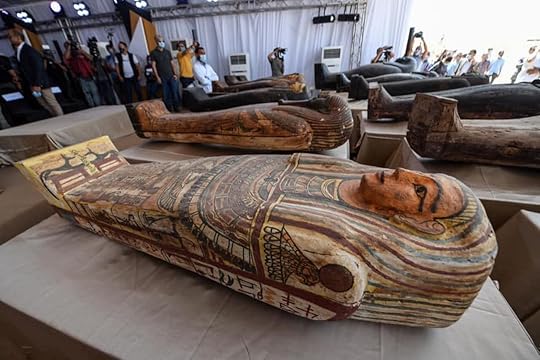
An archaeological excavation in Saqqara, Egypt, led to the incredible discovery of 59 sarcophagi, as well as other artifacts, buried more than 2,600 years ago. Saqqara was an active burial ground for over 3,000 years, serving as the necropolis for Memphis, the capital of ancient Egypt. The discovery is said to be one of the largest of its kind.
The sarcophagi were found in three different wells and it is believed that more remain to be found. Most of the sarcophagi found contained mummies.
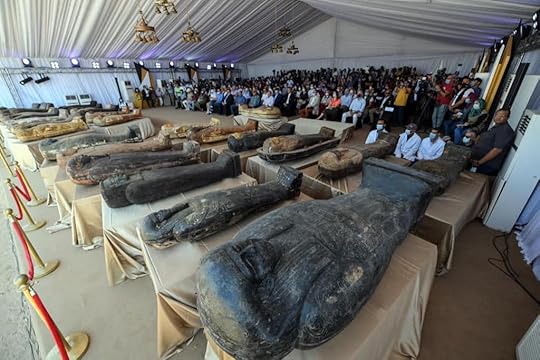
Photo: Ministry of Tourism and Antiquities وزارة السياحة والآثار/Facebook
Additionally, archaeologists discovered 28 statuettes of the god Ptah-Soker and an ornately carved bronze statuette of the god Nefertum, adorned with precious stones.
Khaled el-Anany, Egypt’s Ministry of Tourism and Antiquities, said, “I consider this is the beginning of a big discovery.”
The sarcophagi are now on display, and one was opened so reporters could see the mummy inside. Initial studies have shown that the decorated coffins were designed for priests, top officials, and elites from the Late Period, which ranged from 664 to 525 BCE.

Photo: Ministry of Tourism and Antiquities وزارة السياحة والآثار/Facebook
According to el-Anany, the finds will be showcased at the new Grand Egyptian Museum, which is currently being built in Giza, alongside 30 ancient wooden coffins discovered in Luxor. 
A version of this article was previously published on September 21, 2020, and was updated on October 5, 2020, with more information.
More like thisArchaeology7 underrated sites in Egypt worth visiting, according to an archaeologist
The post At least 59 sarcophagi discovered at sacred Egyptian site appeared first on Matador Network.

Shorten Global Entry wait time

On September 8, US Customs and Border Protection began interviewing conditionally approved Global Entry applicants following a six-month hiatus due to the COVID-19 pandemic. The closure caused quite a backup in applicants — many who had applied to the program even in 2019, before the pandemic struck, are facing a wait time of six months or more for their scheduled interview. Thankfully, two new services, one from the TSA and one from a private third party, are stepping in to help travelers shave months off of their interview wait time. Here’s everything you need to know about Enrollment on Arrival and Appointment Scanner.
TSA launches Enrollment on Arrival program
To address the backlog and help conditionally approved applicants join the program faster, the agency recently launched its Enrollment on Arrival program, giving travelers an additional scheduling option. Rather than booking their interview at an international airport months in advance, travelers who have been conditionally approved for Global Entry can arrange to conduct the interview upon arriving home to the United States on an international flight.
Enrollment on Arrival is currently available at 62 international airports across the US and internationally. Upon landing, passengers will see signage directing them to CBP agents who will conduct the brief interview as they pass through admissibility inspection. For flyers who live far from an international airport, this option saves the need to travel to one solely for the interview, but of course, the option is only available when returning from an international airport — no “drop-ins” are permitted.
If you plan to conduct your interview through the Enrollment on Arrival program, be sure to bring your passport and an official document that shows your current address.
Appointment Scanner helps applicants find vacated appointments
The drawback of the Enrollment on Arrival program is that you must actually be arriving on an international flight to participate. A low percentage of Americans will take international flights between now and the end of 2020, nulling the chances of approval for the program until at least 2021.
But there’s one small hope for conditionally approved travelers looking to join Global Entry without waiting six months or more for their interview — a digital service called Appointment Scanner. For $15, travelers can sign up to receive text or email notifications of vacated or otherwise opened Global Entry appointments at nearby international airports.
After signing up on the company’s website, you can select nearby airports and customize your profile to only receive alerts relevant to you. It’s by no means a guaranteed interview slot but you might just get lucky.
How do I become conditionally approved for Global Entry?
Global Entry is managed by US Customs and Border Protection and one of its Trusted Traveler Programs. To get started, apply via the official website and pay a $100 fee. You’ll answer a series of questions and identity verification steps, and once the agency has confirmed that you pose no threat to national security, you are classified as “Conditionally Approved.” From there, the only thing standing between you and the sheer bliss of skipping long customs and security lines is the interview.
Once approved for the Global Entry program, your membership is valid for five years and after that period it must be renewed. Check out Matador Network’s breakdown of Global Entry and TSA PreCheck for more. 
More like thisRoad TripsHow to get an International Driving Permit
The post Two new services help travelers get into the Global Entry program faster appeared first on Matador Network.

Airbnb is banning one-night stays

If you were hoping to book an Airbnb as part of your Halloween celebration this year, think again. To limit the spread of COVID-19 and strengthen its policy against unauthorized parties, Airbnb will be banning one-night stays over Halloween weekend this year in the US and Canada, and any existing one-night bookings will be canceled.
This applies to bookings for entire homes on October 30 or 31, and is part of Airbnb’s attempt to prevent large gatherings and parties — both due to the pandemic and previous rowdy incidents at properties.
“In case any individuals are able to avoid Airbnb’s defenses and host parties, trained agents from Airbnb’s neighborhood support line will be on call throughout the weekend to quickly respond to issues raised by neighbors,” Airbnb said in the announcement. “The great majority of guests are respectful of our hosts’ homes and neighbors, and we understand that this initiative will disrupt many one-night reservations that might not have led to parties. This action is designed to help protect our hosts and the communities they live in.”
Airbnb will refund any guests who have already booked a one-night stay, and hosts will be paid for stays canceled due to the new policy. 
More like thisCultureThe ultimate Dracula tour of Transylvania for Halloween
The post Airbnb is canceling one-night stays for Halloween weekend appeared first on Matador Network.

Matador Network's Blog
- Matador Network's profile
- 6 followers



